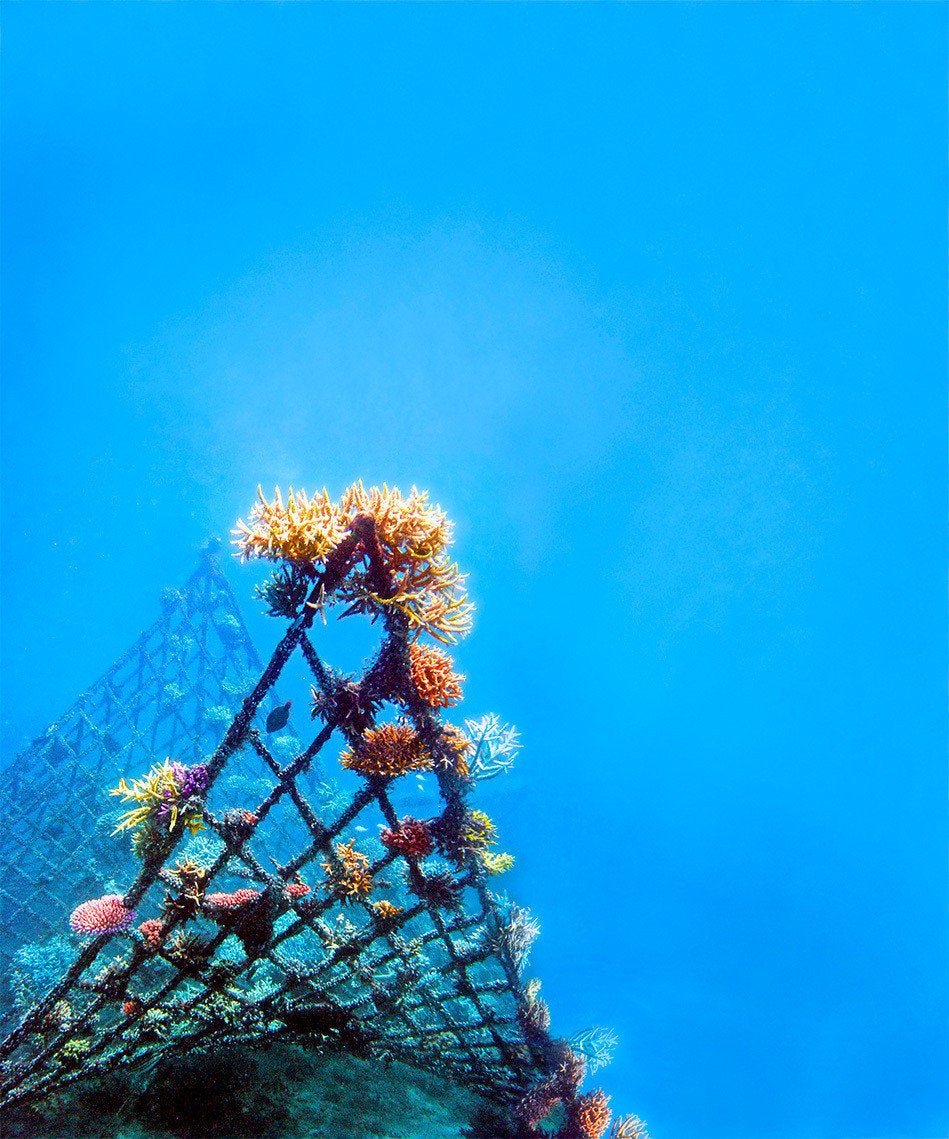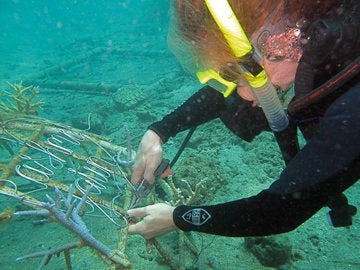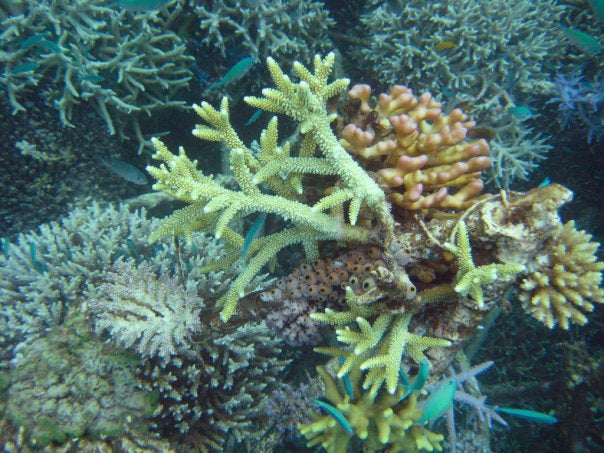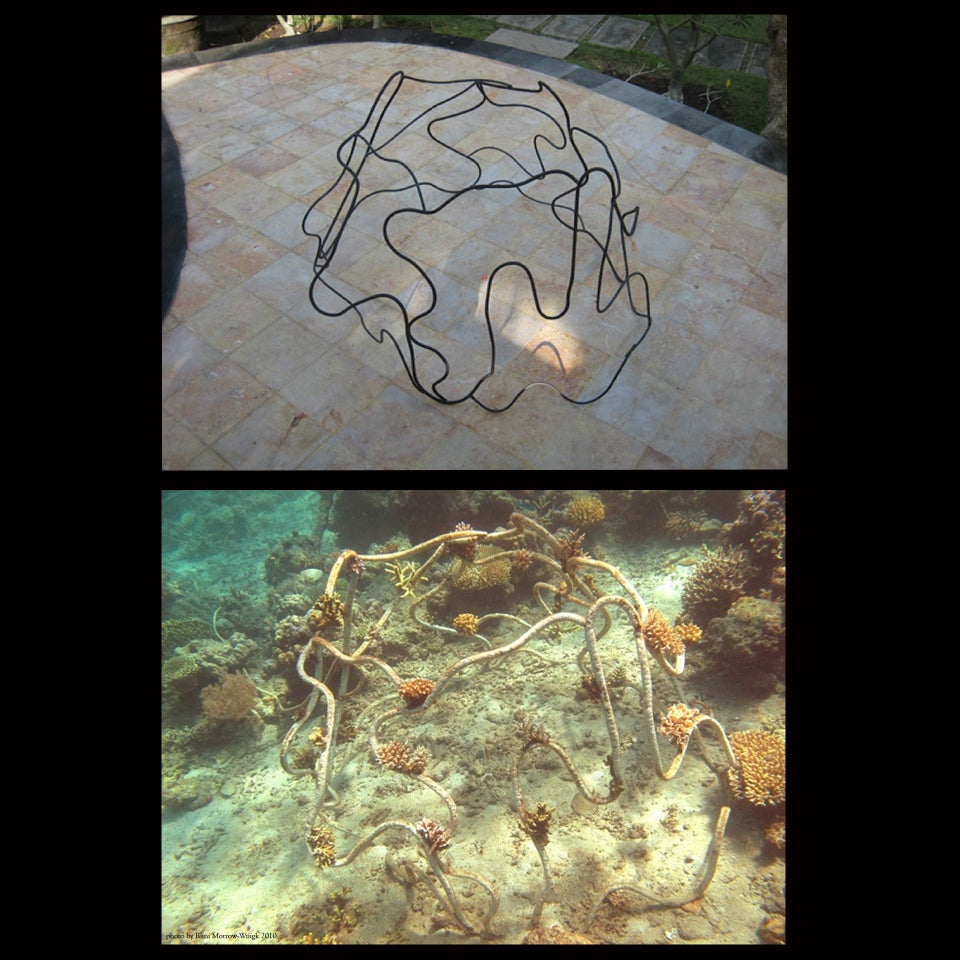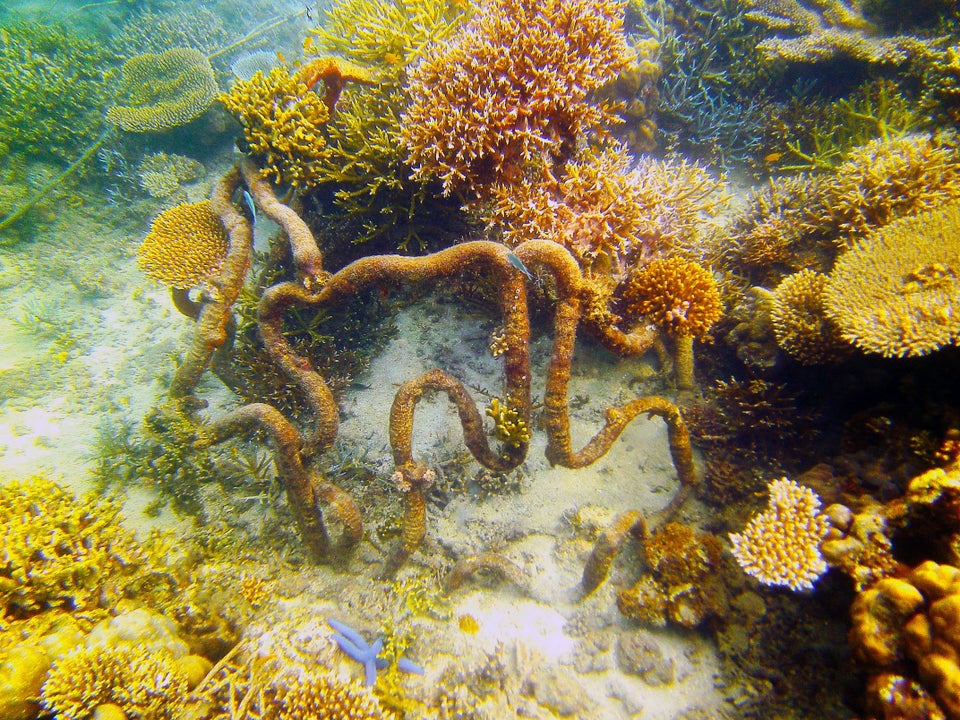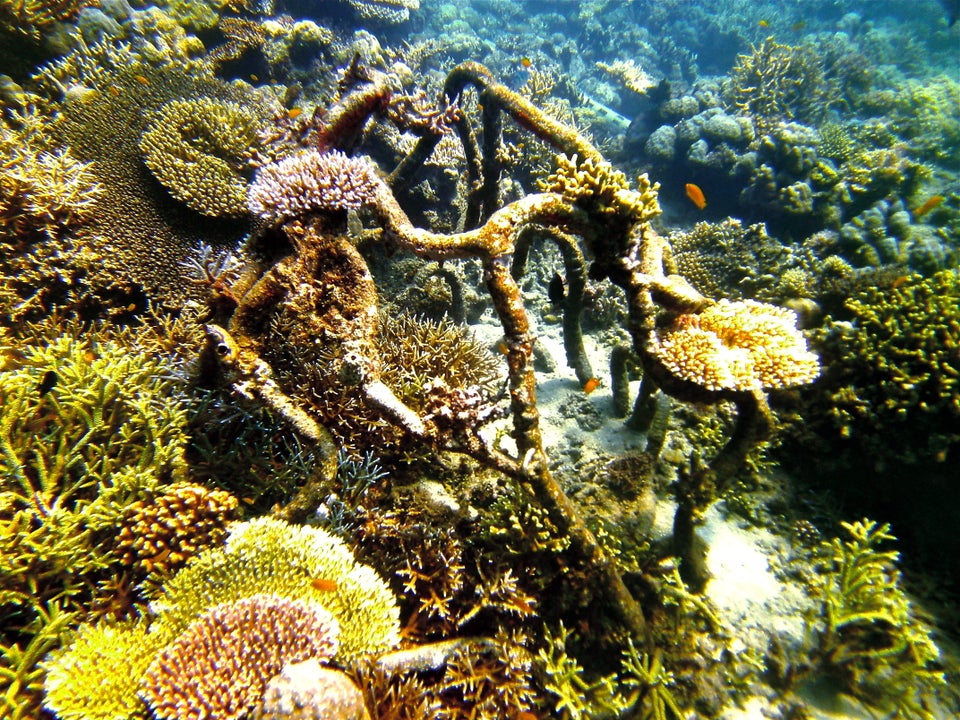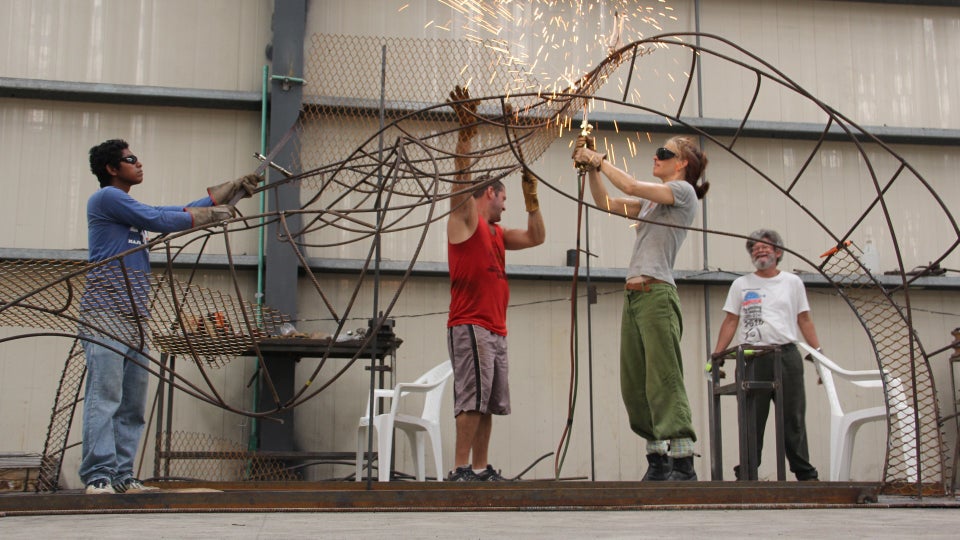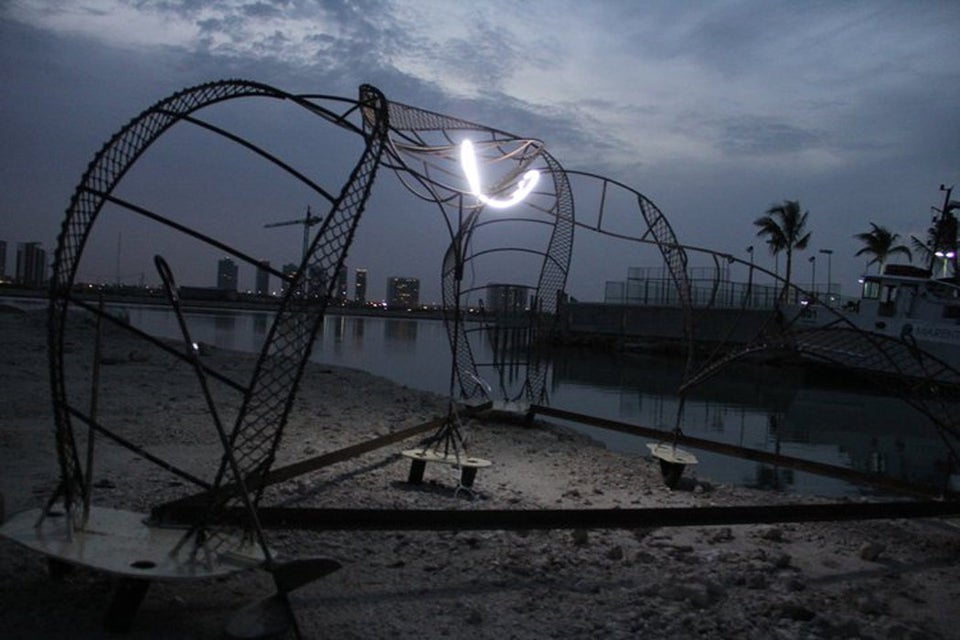Colleen Flanigan's underwater sculptures help bring the ocean's dying reefs back to life.
By Diana Rico
"Growing up in Monterey, California, I marveled at corals' natural beauty," says artist, metalsmith and lifelong ocean lover Colleen Flanigan, 43. "They seem so magical -- it's beyond anything you could make." But in 2003, at a sustainable architecture conference, she heard news that crushed her: The world's coral reefs -- the most diverse of marine ecosystems, which roughly a quarter of the ocean's species depend on -- were dying from climate change, pollution, overfishing and tourism. (It's estimated that most will be threatened by 2050.)
But the news wasn't all bad. At the conference, Flanigan also learned about a promising solution to reverse corals' fate: the Biorock process, a method that uses metal frames and low-voltage electric currents to raise the pH level of seawater, which helps generate coral nurseries. (Biorock corals have been found to better withstand environmental stressors than naturally occurring ones.) "I had to create with this material," Flanigan says. "It was a way to use my background in metalwork and make living art that could help save corals." To install her sculptures underwater, she first needed to learn to scuba dive. "It was terrifying -- and freezing," she says. "But I had to override my fear."
The next year, Flanigan headed to the Bali Sea for her first project. After constructing and welding the steel structure on land, she and fellow team members suited up, attached floats to the sculpture, and swam out with it to the reef; then they removed the floats and submerged the piece 20 feet below the surface to the seafloor. Over the next week, Flanigan spent hours underwater wiring baby coral fragments to the steel, where, once electrified, they would grow more rapidly. "I was high on adrenaline," she says. "I didn't want to get out of the water!" A decade later, her Bali project is part of the largest coral nursery of its kind -- nearly 1,000 feet long.
Today the TED senior fellow is awaiting the final permits to install her most ambitious piece yet, for the Cancún Underwater Museum: a 15-foot sculpture inspired by DNA helices that will become part of the seriously endangered Mesoamerican Reef. "People always say it's too late for corals," Flanigan says. "Not if I can help it!"
The images below capture the amazing progress of Flanigan's Bali project, as well as the construction of the sculpture in Cancun.
